|
|
|||||||||||||||||||
|
Research Microscope - Nf
Stand Carl Zeiss Jena |
|||||||||||||||||||
|
Last update September 12th. 2015 |
|||||||||||||||||||
|
By Dushan Grujich, on September 17th. 2013 |
|||||||||||||||||||
| This binocular research microscope is further development of the Zeiss successful "L" stand done in 1960's. | |||||||||||||||||||
|
Microscope was equipped for bright field and dark field observation as
standard supported by the Pancratic Condenser System.
The basic set was also supplied including the monocular drawtube, a nosepiece capable of accepting five objectives, a binocular attachment having magnification factor of 1 and a "D" prism inclining binocular attachment at an angle of 30� with magnification factor of 1. Stand is equipped with a true Koehler illuminator built into the base, with possibility of oblique illumination as well. Zeiss also made a slightly less comprehensive research microscope stand designated Ng 3.
|
|||||||||||||||||||
|
The basic set of five achromat objectives supplied consists of:
|
|||||||||||||||||||
|
Plus the set of oculars:
|
|||||||||||||||||||
|
This same microscope was also supplied equipped for all other types of light microscopy; for transmitted light as well as reflected, for phase contrast, polarised, luminescent and fluorescent microscopy. |
|||||||||||||||||||
| My latest addition to the Nf stand consists of a set of four Carl Zeiss Jena, DIN 45 mm length Apochromat objectives. |
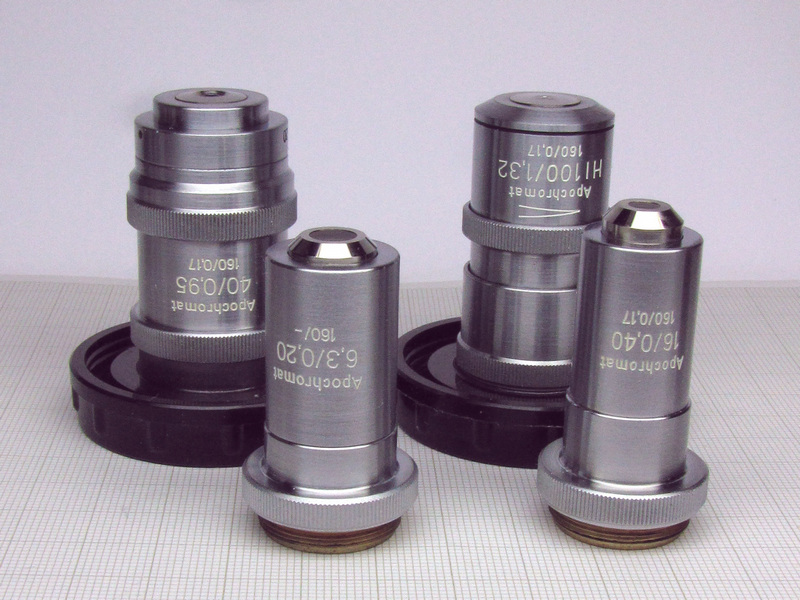
|
||||||||||||||||||
|
Set of apochromat objectives:
and a set of oculars:
|
|||||||||||||||||||
| Here is the image of a basic Nf stand intended for bright and dark field microscopy. |
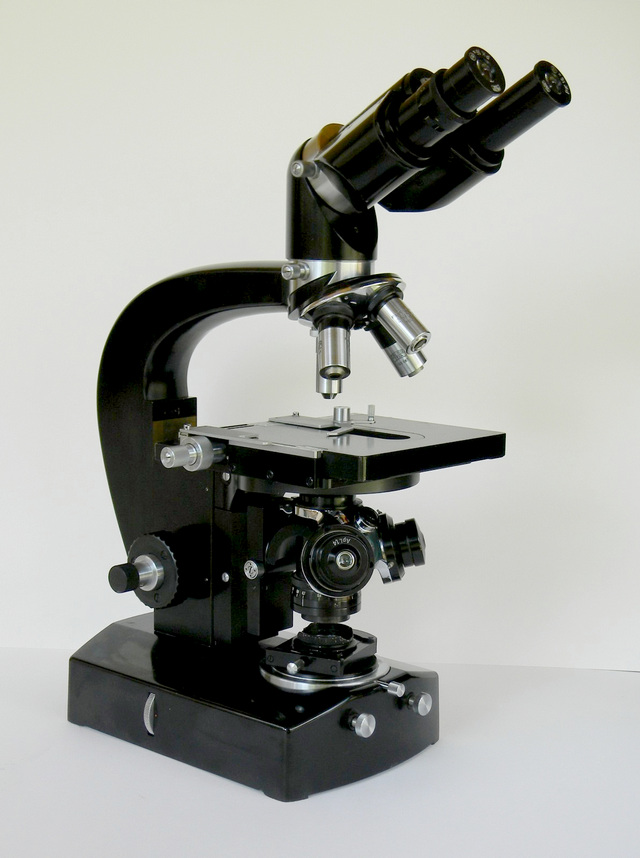
|
||||||||||||||||||
| The Nf stand placed inside the nicely made wooden box with rollo door with the Accessories box in its place above the 'scope. |
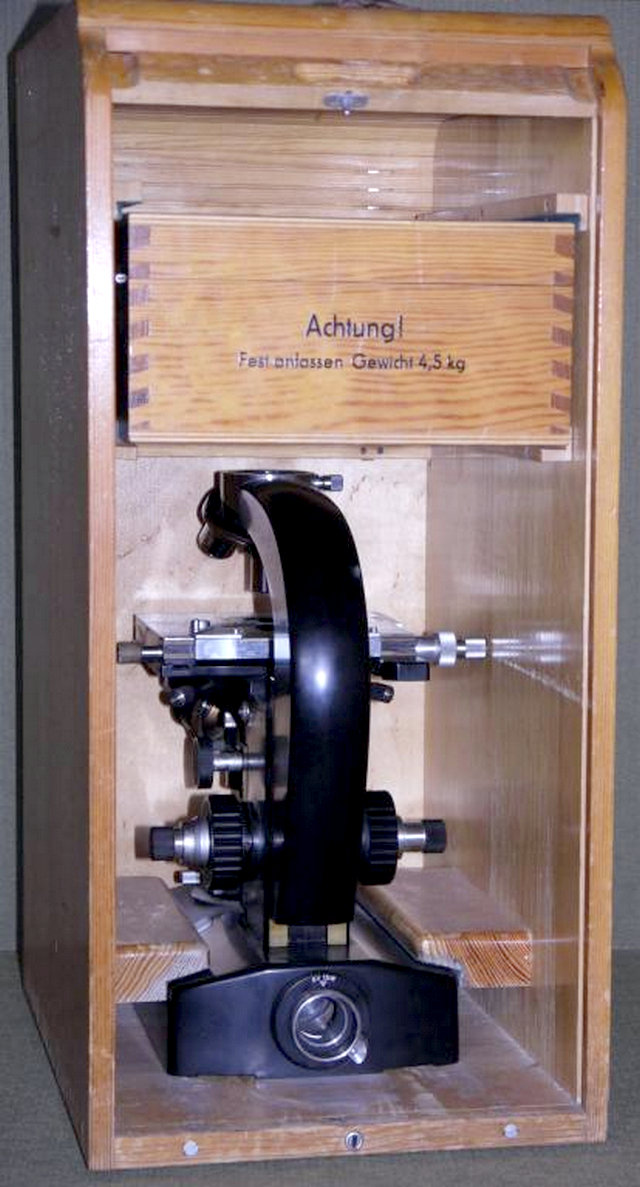
|
||||||||||||||||||
|
The contents of the Accessory box. |
|
||||||||||||||||||
|
The illuminator power supply transformer as well as the lamp holder for my
microscope were missing.
So I have made Power LED conversion for it. |
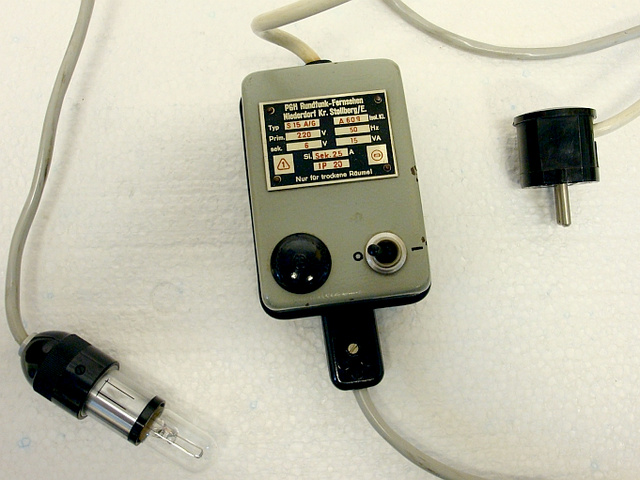
|
||||||||||||||||||
| The
missing illuminator lamp holder (3) and the focusing sleeve (4).
I have managed to find the original lamp holder which does allow quick setting up of the illumination with the incandescent lamp, if and when it becomes necessary. |
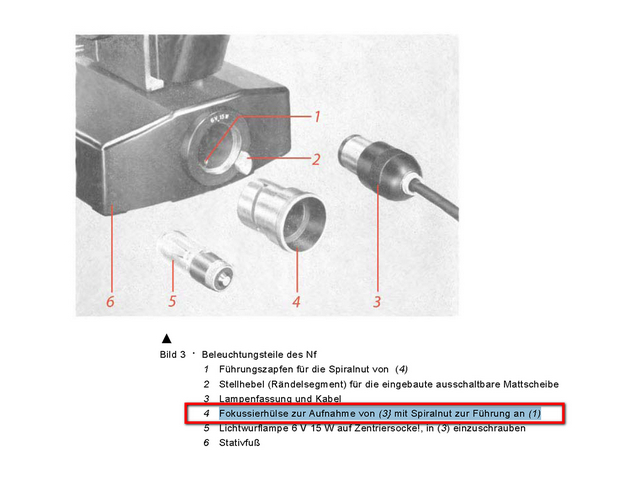 |
||||||||||||||||||
| Focusing sleeve
replacement proved to be very difficult to find, thus I had no
option but to make a new one modelled after the original, which I was
in luck to have at hand to measure.
I have made it out of brass instead of aluminium simply as I have not had a piece of aluminium alloy rod suitable for turning in the lathe. |
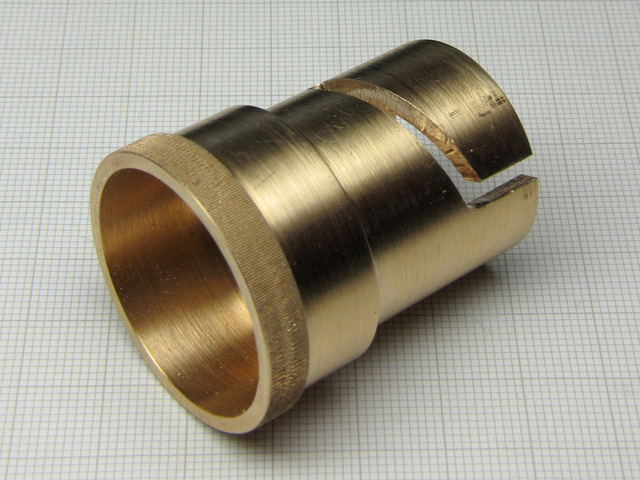 |
||||||||||||||||||
| Monocular tubus with a prism inclined 45�. |  |
||||||||||||||||||
| Here
we can see the unusual arrangement of condenser separated from its
iris diaphragm which is mounted in the base of the 'scope. Diaphragm carrier has also a knob for calibrated control for offsetting illuminating light path to achieve the oblique lighting. The offsetting angle can be set at any position from 0� to 360� simply by rotating complete assembly, CW or CCW. |
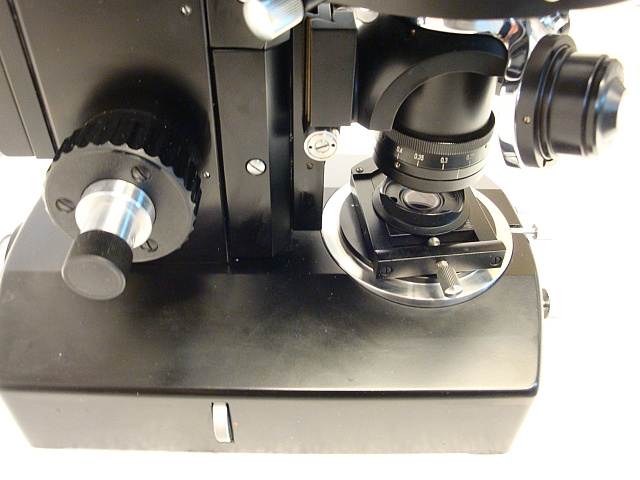 |
||||||||||||||||||
| The view of the Pancratic condenser system with turret and three condensers. | 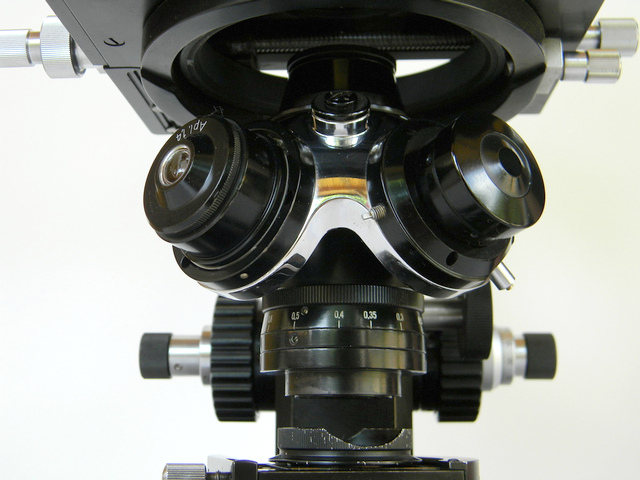 |
||||||||||||||||||
| The
image to the right shows the Phase contrast attachment which mounts to
the bottom of the Pancratic System.
Equpped with a swing out filter holder, and on the bottom there is mechanism for centring the annulus plate. |
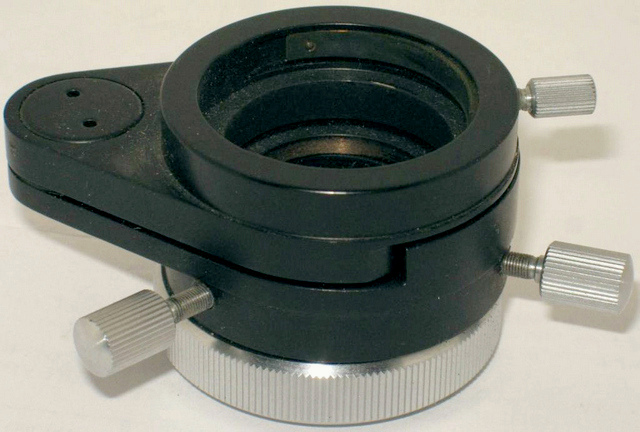 |
||||||||||||||||||
| The underside view of the phase contrast attachment showing the annulus plate with the two centring screws. | 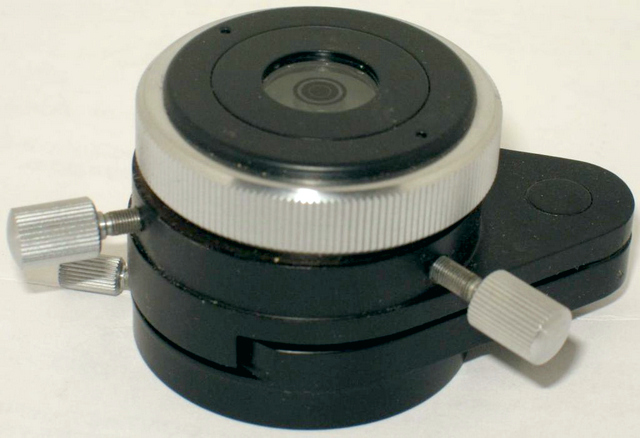 |
||||||||||||||||||
| As an
example of this old timer's dark field abilities.
Image to the right was done with dark field pancratic NA 1.05 cardioid condenser, with the oil bridge between the slide and condenser, using Zeiss achromat objective 40/0.65. Object is Pleurosigma angulatum, Test Slide 8 Forms by KD Kemp |
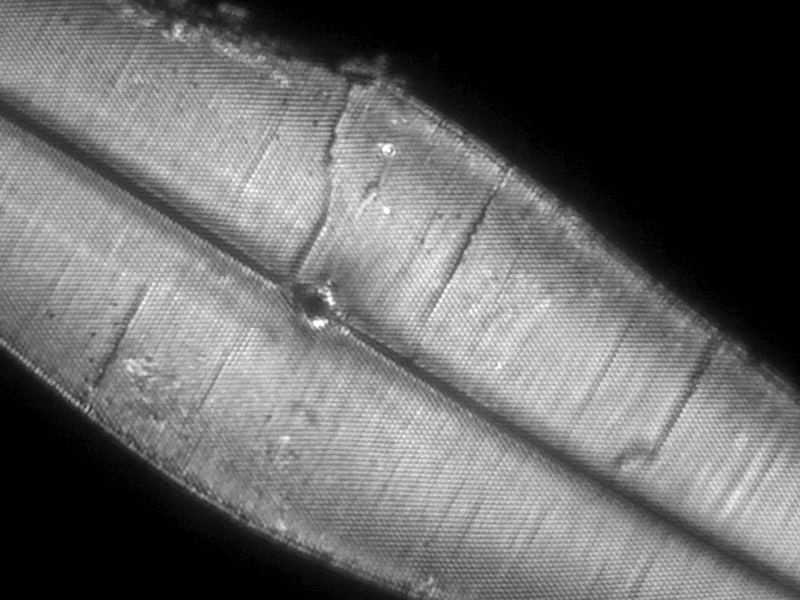 |
||||||||||||||||||
| The
same Zeiss achromat objective 40/0.65, but with use of the pancratic
system aplanatic condenser NA 1.4 and phase contrast anulus.
The annular illumination has allowed fine resolving of punctae of Pleurosigma angulatum, which is not achieveable by ordinary bright field illumination using 40/0.65 achromat objectives. |
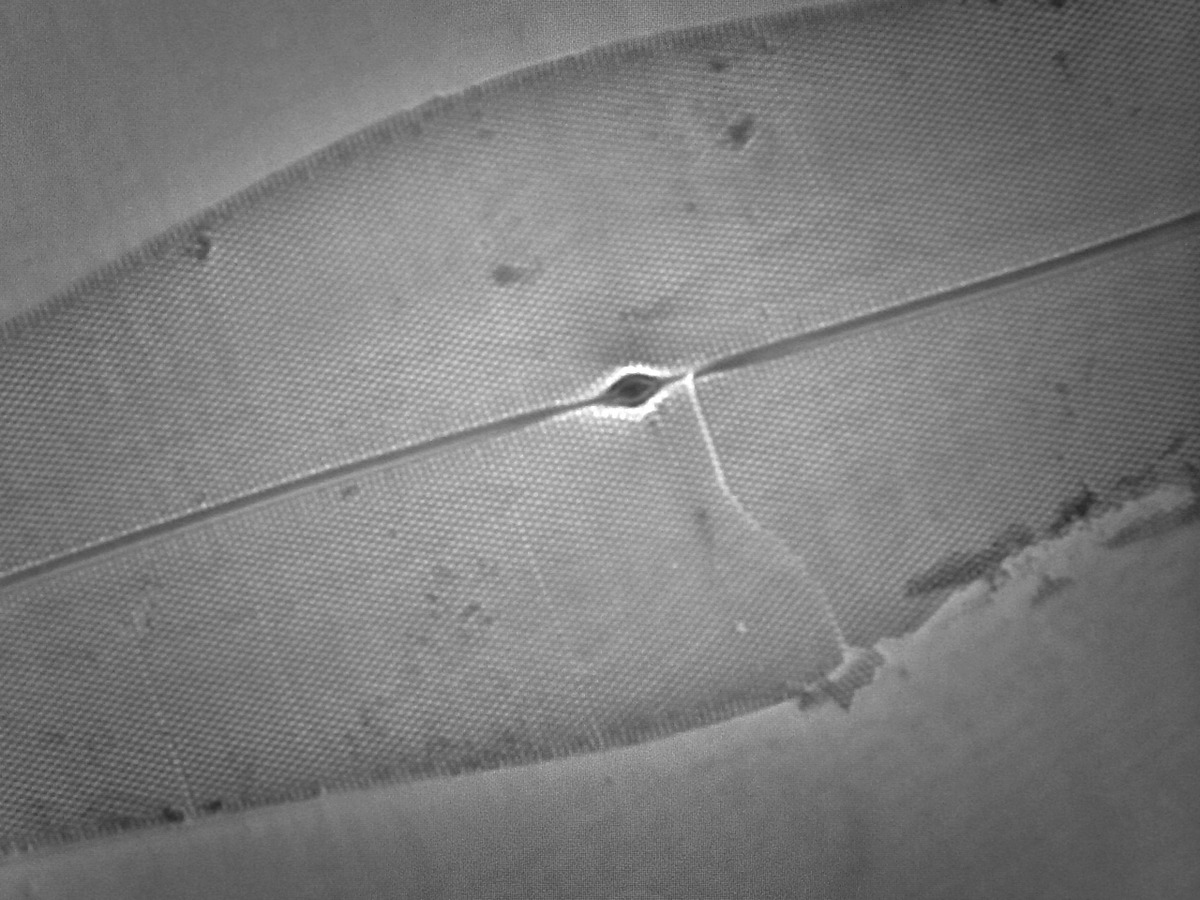 |
||||||||||||||||||
| References: | |||||||||||||||||||
|
1. CZJ Mikroskope Nf - 30-037-1.G(Text - de) |
|||||||||||||||||||
| 2. CZJ Mikroskope Nf - 30-037-1.G (Images - de) | |||||||||||||||||||
| 3. CZJ Mikroskope Nf - Ng - 30-036b-1 (de) | |||||||||||||||||||
| 4. Objektive und Okulare f�r Mikroskope Lg, Ng, Nf, Xk und Xa - 30-400b-1.T | |||||||||||||||||||

|
|||||||||||||||||||
| top | |||||||||||||||||||
|
Hit Web Counter |
|||||||||||||||||||